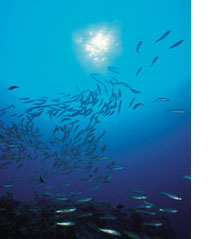|
Q: |
What are SMaRT certified sustainable products? |
|
A: |
They are independently certified products best for the environment, economy and social equity. |
|
|
|
|
Q: |
What does SMaRT stand for? |
|
A: |
Sustainable Materials Rating Technology
|
|
|
|
|
Q: |
How are SMaRT sustainable products identified? |
|
A: |
They must score 28 out of 157 points in the following areas covering all product stages across the global supply chain: |
|
|
- Safe for Public Health & Environment
- Energy Reduction and Renewable Energy Materials
- Company & Facility Requirements including Social Equity
- Reuse & Reclamation
|
|
|
|
|
Q: |
What are the levels for Sliver, Gold & Platinum Certification? |
|
A: |
Silver is 41-60, Gold is 61-89 and Platinum is 90-157.
|
|
|
|
|
Q: |
How are SMaRT sustainable products certified? |
|
A: |
Manufacturers must: |
|
|
- Submit a completed Application
- Pass a data audit
- Execute a legally binding certification that the data are accurate, not mis leading and qualified professionals were used
- Publish a summary of the certification on a web site
- Pass an outside third party audit
- Renew certification every three years
|
|
|
Q: |
Who conducts SMaRT auditing / certification? |
|
A: |
Ernst & Young's Global Sustainable Auditing Group & Redstone Global Auditing
|
|
|
|
|
Q: |
What are the benefits of specifying SMaRT Certified Sustainable Products? |
|
A: |
SMaRT certified products:
|
|
|
- Reduce over 2000 pollutants including climate pollution, toxic pollut ants, acid rain, ozone depletors, water and air pollutants and solid and hazardous waste
- Reduce conventional energy use & use Green-e Renewable Power
- Employ sustainable agriculture with the most credit for organic products with EPA / Purdue University Best Management Practices
- Reuse and recycle products lessening waste to landfills and incinerators
- Improve manufacturer profitability, brand, share, and competitive advantage
- Are overwhelmingly preferred by consumers and purchasers according to Federal Trade Commission and environmental surveys
|
|
|
Q: |
Why choose SMaRT? |
|
A: |
SMaRT is:
|
|
|
- The leading brand Has the most adoptions (8) including AIA, USGBC / LEED credit, Fire man's Fund, Sustainable Furniture Council & City of Santa Monica
- Transparent, quantified, global and prevents greenwash which is unlaw ful Covers 80% of the world's products excluding only planes and vehicles
- Incorporates over 20 other leading sustainable product standards
- A consensus standard the result of 15 years of approvals including Life Cycle Assessment (LCA)
- Favored for adoption including by governments and the capital markets, because it is a leadership consensus standard greatly advancing global sustainability and consensus standards substantially reduce risk and un certainty.
|
|
|
An EMERGENCY Standard part of AIA's Directive to reduce 60% of conventional energy use in buildings by 2015. |
|
|
|
|
Q: |
What is LCA and why does SMaRT mandate it? |
|
A: |
LCA evaluates multiple environmental impacts over all product stages as required by law for sustainable products.
|
|
|
|
|
Q: |
What is LCA and why does SMaRT mandate it? |
|
A: |
LCA evaluates multiple environmental impacts over all product stages as required by law for sustainable products.
|
|
|
|
|
Q: |
Who controls SMaRT? |
|
A: |
SMART Consensus Committees have exclusive jurisdiction for SMaRT approval, interpretation, and mandatory revisions
|
|
|
|
|
Q: |
Who administers SMaRT? |
|
A: |
MTS.
|
|
|
|
|
|
|
Q: |
Who can participate in SMaRT? |
|
A: |
All interested and affected parties. Participation is not restricted.
|
|
|
|
|
Q: |
How does SMaRT involve industry trade associations? |
|
A: |
Industry trade associations officially participate through one or more of their Members.
|
|

